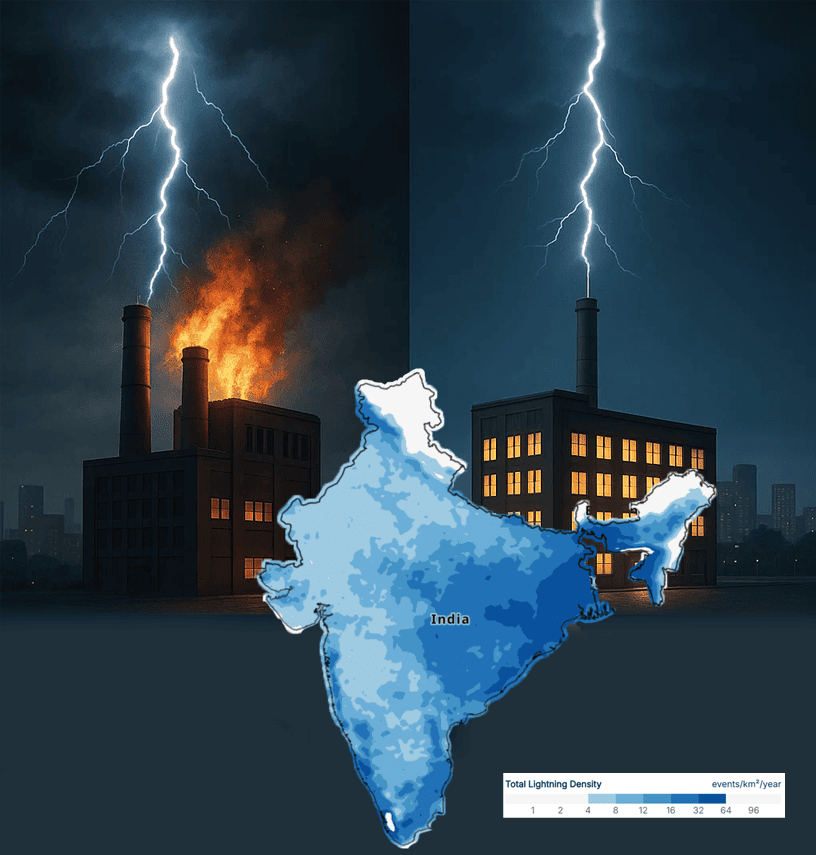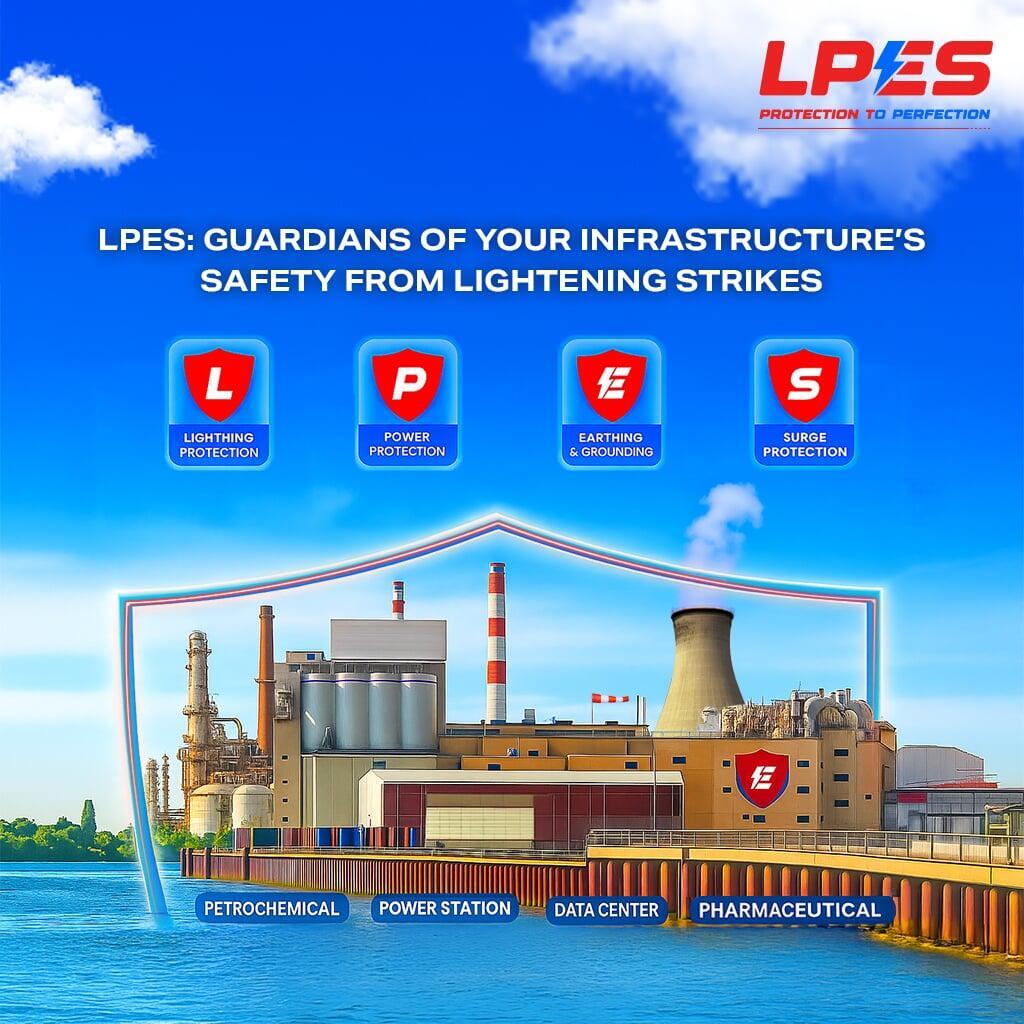
Introduction: Why Lightning
Protection Matters
At LPES International, we specialize in designing and installing lightning protection systems that comply with IEC 62305, IS 2309, and IS 3043. Our expertise ensures that lightning protection for buildings in India is not only technically sound but also fully compliant with global and local standards.
By integrating lightning protection system design with precise installation and longterm maintenance, we safeguard people, property, and critical infrastructure from devastating lightning effects.
What is a Lightning Protection System?
A lightning protection system is an engineered network that intercepts, conducts, and safely dissipates lightning energy. Unlike a simple rod, a complete lightning protection system includes:
● Air terminals (lightning rods): Capture strikes.
● Down conductors: Provide safe current paths.
● Bonding and equipotential links: Equalize potentials inside structures.
● Earthing system: Dissipates lightning energy into the soil.
● Surge Protection Devices (SPDs): Prevent transient overvoltages inside.
This comprehensive approach ensures full lightning protection for buildings, covering both structural safety and electrical resilience. When customers ask for lightning conductor installation, we emphasize that a rod alone is insufficient—only a complete lightning protection system provides reliable coverage.
Why Buildings Need Lightning Protection
Modern facilities—hospitals, factories, residential towers, and data centers—cannot afford disruption. Installing a lightning protection system is critical for:
Lightning Protection System Design
Every safe system begins with professional lightning protection system design. At LPES International, our engineers use IEC 62305-2risk assessment to evaluate:
Design techniques include:
Lightning Protection System Installation
A strong design must be executed with precision. Our lightning protection system installation process is carried out by trained teams who adhere to both engineering standards and safety regulations.
Integration of Surge Protection
Lightning doesn’t just strike structures—it induces surges that destroy electronics. That’s why every lightning protection system we install includes coordinated SPDs:
Inspection and Maintenance
A neglected lightning protection system loses effectiveness over time. That’s why we insist on regular inspections after lightning conductor installation.
Best practice requires:
Cost of Lightning Protection in India
The cost of a lightning protection system installation varies depending on:
● Building size and risk class.

What Sets LPES International Apart
Our difference lies in combining design, engineering, and compliance into one solution:
● Risk assessments aligned with IEC 62305.
Conclusion
In lightning-prone India, protecting people and property demands more than basic measures. Only a certified lightning protection system ensures compliance, safety, and business continuity.
LPES International is India’s trusted partner for lightning protection for buildings in India. From lightning protection system design to lightning protection system installation, and from lightning conductor installation to long-term maintenance, we deliver end-to-end solutions that safeguard life and infrastructure.

